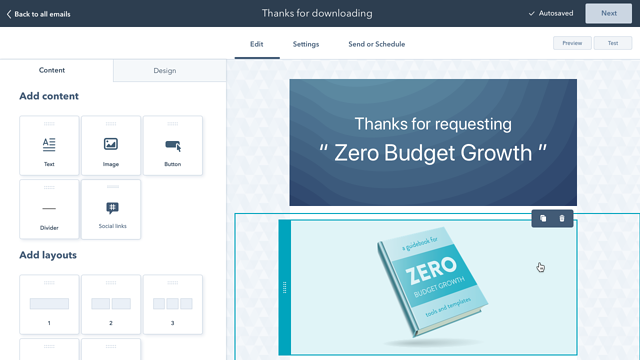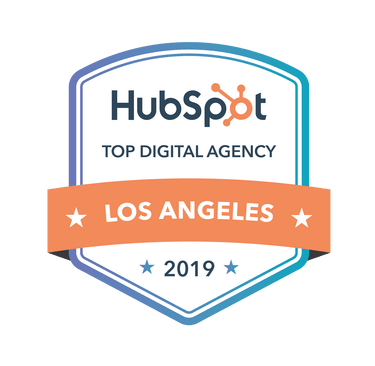Sections
Effective Ways to Build and Segment Your Email Lists for Lead Generation
With eCommerce, you have a much better idea of what these people want from you. You either got their email when they made a purchase on your website, or they gave it to you willingly by signing up on your website. In the first scenario, you already have data from their purchase history you can match up with other customers. In the second, you at least know they want to buy from you, so you can use flash sales and promotion emails to pique their interest.
With lead generation, on the other hand, you could have received those emails from a number of avenues. Maybe they filled out a lead form on your website or called one of your sales reps. Or they attended an event you held or subscribed to your blog.
Depending on where those leads came from, you may have a lot of information on them, or barely any. Fortunately, you can get smarter about how you collect your email leads and set them up for successful segmentation.
If you’re a B2B business, segmenting your email lists is a no-brainer. Sure, it takes a bit more finesse than for eCommerce, but it pays off—and in a big way. According to research from Mailchimp, segmented emails enjoy 15% higher open rates and 60% more clicks!
Email Strategy: Personalized Messages

Your Marketing People can help you deliver the right email messages at the right time to the right people. Let’s set your email marketing up for success by first segmenting your lists.
How to Segment Your Email List for Lead Generation
Without segmentation, you essentially have just a pile of emails. Segment your list, and suddenly that vague pile becomes defined. You can sort and discover who your leads are by their stage in the sales cycle, their industry, and more.
With that knowledge in hand, you can finally send your leads emails that feel personalized and relevant to their needs. Instead of getting bored, they get interested, leading to increased opens, clicks, and, yes, conversions.
Do you already have an email list? Here’s how to segment it for more effective email marketing.
- Existing customers vs. prospects – These are two very different audiences. Once a lead has converted, they should no longer be treated as a prospect. Instead, you should be funneling them into new drip campaigns focused on upsells. In fact, prospects can be further segmented from brand new leads as they progress through different stages of the funnel.
- Business size – Small businesses have very different needs than enterprise, or even regional, organizations. If your business caters to businesses of all sizes, you can develop content for each one and segment your list accordingly.
- Industry – Do your customers tend to fall into specific industries? These likewise have different needs. Clients in the healthcare or financial space may have specific privacy needs they need to focus on, which you can speak to in your email campaigns. Real estate and automotive clients will have distinct customer journeys as well.
- Role – Depending on the type of services you provide, you may deal with various stakeholders during the sales process. While all of these people are trying to solve the same problem for the company, they’ll likely have different motivations for doing so. A C-level stakeholder will care most about the bottom line, while a specialist stakeholder will want to know how your service helps them do their job more efficiently.
- Business goal or problem – Speaking of business goals, these pose yet another opportunity for segmentation. If you know what goal your lead is trying to achieve, you can email them content that educates them on how your business is uniquely qualified to help them achieve that goal.
- Location – Knowing a lead’s location can further help you provide more personalized content. If your business caters to different locations, or you hold in-person events, you can segment your lists to deliver invites only to the leads most likely to care.

Choosing the Right Email Platform for Lead Generation
Segmentation is such an important part of email marketing success, that you’ll find this capability included with nearly any email marketing service. That includes Constant Contact, AWeber, GetResponse, Mailchimp, Emma, and others.
At Your Marketing People, we recommend HubSpot for email marketing. Why?
Most email marketing providers focus on email marketing and email marketing alone. HubSpot provides powerful email marketing functionalities, including list building, list segmentation, A/B testing, and more. But, email marketing is just one part of their comprehensive marketing and lead management software.
With HubSpot, you can tie your email marketing efforts into your end-to-end marketing strategy, linking email campaigns and customer engagement back to the content you’re publishing on your blog and social media channels. You can see high-level metrics at each stage of the funnel, so you can pinpoint where you need to adjust your approach or develop new content for a particular segment.
Plus, when you partner with a HubSpot Certified Partner like Your Marketing People, you get exclusive access to savings, support, and more. Ready to get started? Learn more about our inbound marketing services.
Start with HubSpot
As a HubSpot Silver Certified Agency Partner, Your Marketing People can help you implement this powerful CRM and take your digital marketing to the next level.








